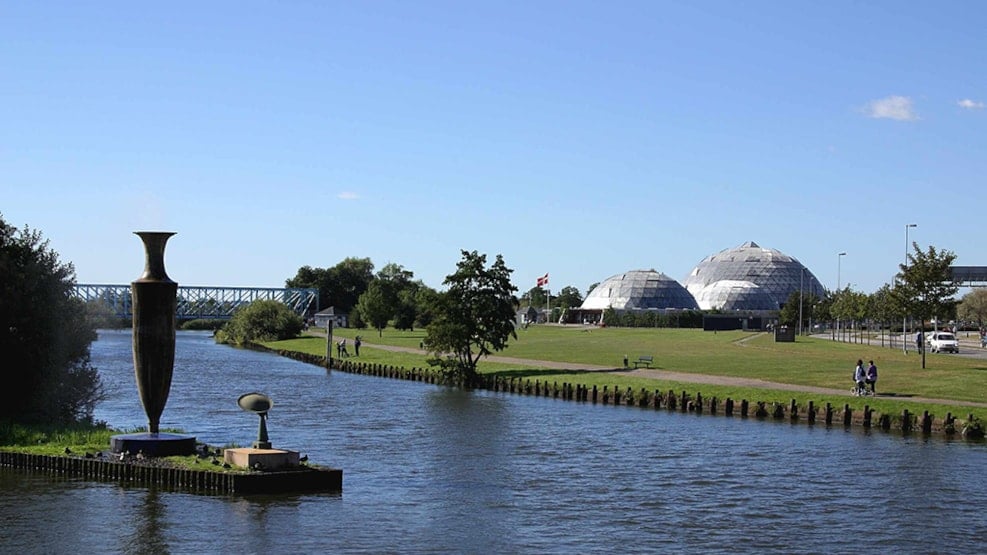
Cycling route along the old railway
Enjoy at cycling tour along the old railway and one of Jutland's first railways - the section between Randers and Hadsund. Today it is a bike and hiking trail from Randers to Spentrup and via Bjergby and Borup.
Length of the route: 30 km
Worth knowing about the route
Parking: Brotoften in Randers C
Road surface: Asphalt and gravel
Estimated cycling time: Approx. 2.5 hours (at 12 km/hour)
Traffic conditions: A few major roads are crossed.
Randers and the railroad
The factory's director Robert Rowan got the idea to also build a railroad from Randers to Hadsund, and it opened in 1833. It had its own railway station in Fischergade until the railway was closed in 1969 driving through a scenic area over Lem to Spentrup.
Lem and Lem Church
If you want a short detour you can cycle to the village of Lem. Lem has a high proportion of conservation-worthy houses and on Lemvej you can see the beautiful, partially enclosed courtyard facades surrounding the road. The farm Syvager from 1872 was converted into apartments in 2009 and the farm is a good example of how agricultural buildings can be reused and transformed in a way that they continue to express the original purpose of the village and buildings.
See on a map (GoogleMaps)
Spentrup
The poet Steen Steensen Blicher was a priest in Spentrup from 1825 until his death in 1848, and here he wrote several his most famous poems and novellas, e.g. “E Bindstouw”. In Blicher’s memorial room in Malvina’s House, one can see some of his manuscripts and personal effects such as his desk. The house is named after Blicher’s much-beloved daughter Malvina who lived in the house after she married the administrator of the vicarage. Spentrup Church is a Romanesque church, constructed from granite ashlar blocks and with a late-Gothic tower. In the chancel arch, well-preserved chalk murals from approx. 1225 can be found, and the votive ship “Tordenskjold” was put on display for the first time in connection with Malvina’s wedding in 1838. Blicher’s burial plot can be found in the churchyard here.
See on a map (GoogleMaps)
Hvidsten
Hvidsten is first and foremost known for its royally licensedinn, which was founded back in 1634. Since 1884, the Fiil family has owned the inn, and today it is run by the fourth generation. Innkeeper Marius Fiil formed The Hvidsten Resistance Group in 1943, which was in charge of receiving weapons drops to the Danish resistance movement during the German occupation.
See on a map (GoogleMaps)
Bjergby
Bjergby is an old village, and as it says in Danish it is situated on a hill. Today the town consists of 10 large farms and some few houses, and this has been the case during the last couple of centuries.
See on a map (GoogleMaps)
Borup
Borup Church has likewise been built of granite ashlar blocks in Romanesque style, whereas the tower is late Gothic. In the porch stands a rune store from the Viking Age. It was not found until 1995 under the bricked-up northern door, and the runic inscription goes as follows:”Ase (eller Æsi) rejste denne sten efter Thorgot, sin fader, Boves søn, den bedste Thegn” (Ase (or Æsi) raised this stone after Thorgot, his father, Bove’s son, the best thegn). A “thegn” is an aristocratic retainer or a person of high military rank.
See on a map (GoogleMaps)
See more cycling routes in and around Randers right here.